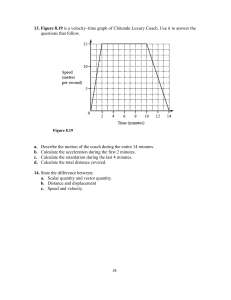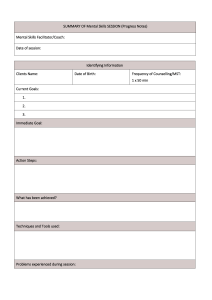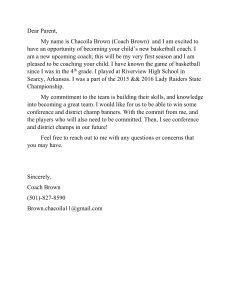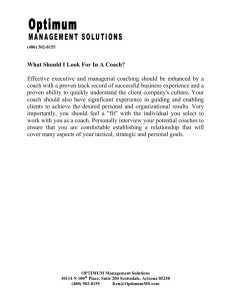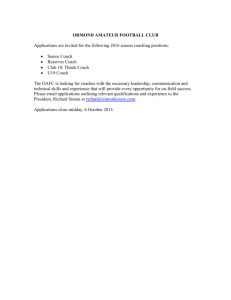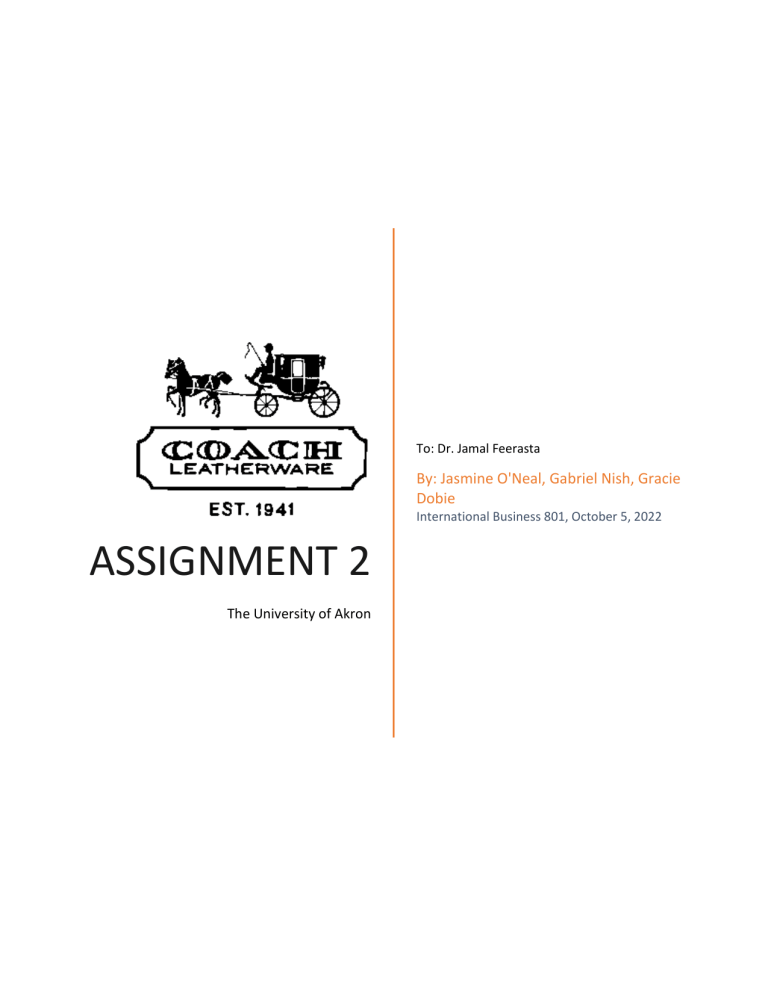
To: Dr. Jamal Feerasta By: Jasmine O'Neal, Gabriel Nish, Gracie Dobie International Business 801, October 5, 2022 ASSIGNMENT 2 The University of Akron This article tells of a versatile journey through the founding and modern day standing of Coach New York (commonly known as Coach), on the global market. The story begins in 1941 with a small workshop and six leather workers. These humble beginnings would set the stage for a brand that sought to bring affordability to quality luxury items. At its start, Coach only made wallets, billfolds and other small leather goods. It was not until a married couple, Miles Cahn and his wife, joined the company, with a vision to expand its brand, did things really takeoff. After adding signature handbags, which upheld their quality years beyond any competitor, the brand soared to the heights of the market. This success was not overnight, due to some key issues endured by the fashion giant. Competitors entering the market, staying relevant with new fashion, and overcoming barriers to entry in new markets. It was only after the rise of brands such as Michael Kors and Kate Spade, that Coach began to lose market share. The company fell on hard times, as its image was associated with gaudy, mass produced handbags, that only appealed to older women. Standing stead fast in its original mission to provide superior quality compared to that of their competitors, in 2014 Coach rebranded their company to one of “Modern Luxury”. The idea behind the rebrand, is to create long term relationships with loyal customers, to keep them coming coming back. This marketing overhaul, placed Coach in new territory. After loosing 30 percent of its market share to companies like Michael Kors, and Kate Spade, the company’s creative director Stuart Vevers, pushed to make the brand smaller and healthier, producing high quality products in smaller amounts. This philosophy, plays directly into their plans to expand the company in emerging markets. 1 China had a huge demand for affordable luxury. Michael Kors, saw this trend and capitalized on it by diversifying their product lines in China. Kate Spade had an appeal in the U.S market with its chic designs and accessories. Not to be out done, Coach purchased Kate Spade and introduced non-leather products. The product launch was not very well received. The acquiring of Kate Spade, proved to be beneficial, leaving Michael Kors as the single largest competitor for Coach. What does this have to do with globalization? Coach’s business model utilizes the globalization of production. No longer only using its resources in the U.S, Coach has spread out to become culturally relevant in places such as Latin America, China and India, whose economies are experiencing rapid growth. They have factories in the markets they are serving, and their website, which host over 20 countries, places their product in the hands of new consumers. Coach’s distribution now offers both direct and indirect channels, making them a more well-rounded global firm. What did we learn from all this? Coach on its surface appears to be deeply rooted in the fashion industry. We are experiencing the brand at a time where it is thriving, with brand recognition and outlet stores strategically placed. The story of Coach teaches us that globalization constantly changes the landscape of business. There really is no such thing as a company too big to fail and globalization will always be relevant to multinational success. 2 Reference Gupta, Abhinav. “Coach - the Success Story.” The Pangean, The Pangean, 15 June 2021, https://thepangean.com/Coach-The-Success-Story. 3

